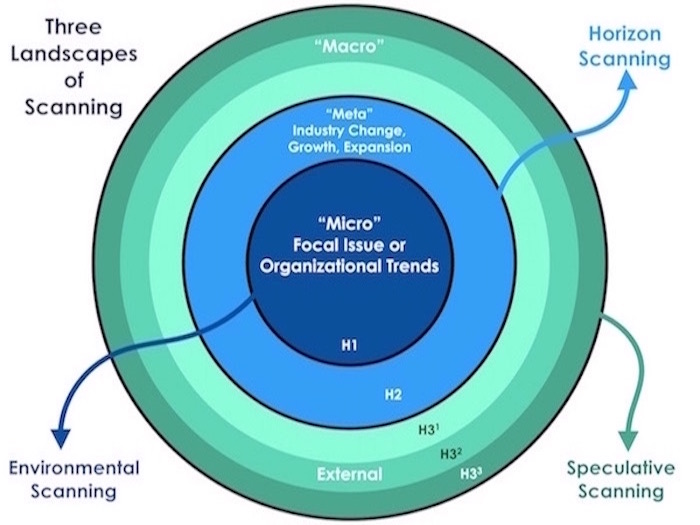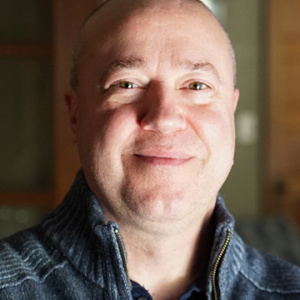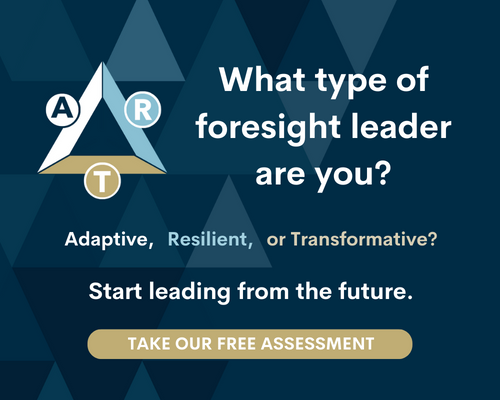Beyond Environmental Scanning: How Speculative Inquiry Can Help Organizations To Be Successful In The Here And Now
Over the past several years, many organizations have told us that they see the long-term value of foresight and futures thinking, but are unsure of how to translate that skill set into immediate action and outcomes. This is where I inform them of the ultimate value of foresight: it’s ability to create the future today. This can mean introducing brand new ideas, strategies and innovations for the organization to implement, as well as ways in which the present strategies and models can be modified and expanded for higher order development, benefit and organizational purpose that has yet to be realized (or even defined).
Still, for many who are stuck in the old mindset of the destructive equation that reads: NTP (near-term planning) + QW (quick wins) = OS (organizational success), it can be hard for them to understand how futures thinking and foresight helps to foster better executives, adaptive businesses and industry-leading organizations. Let me see if I can help you to get off of that outdated and antiquated hamster wheel that only results in building brittle structures.
But first, I need to say something that may seem initially counterintuitive. Do you want to be a leader who knows how to navigate the volatility, disruption and complexity that has no end in sight? Then listen carefully:
Developing a practice and culture of intentionally and purposefully exploring the future in your organization is the KEY to successful strategy, innovation and growth IN THE SHORT TERM.
If that statement doesn’t seem a little strange coming from someone who specializes in helping organizations to map the future, then please read it again very carefully. That’s right – I said that Futures Thinking produces successful short-term strategy and innovation. “But I always thought that foresight was only about preparing for the future,” you say? Au contraire! Futures Thinking and Strategic Foresight is about guiding us successfully into the future as it unfolds, emerges and grows, and that future starts RIGHT NOW. That is why you will often find us saying that you must “Discover The Future and Create It Today.”
Now, I’m not saying that short-term thinking leads to success. Remember, I already told you that NTP+QW=OS is an outmoded and broken way of thinking and acting in today’s landscape of increasing exponential change. What I am saying is that thinking proactively about the future leads to taking action with both far-reaching and immediate results. As a matter of fact, if your foresight efforts aren’t leading to immediate action plans, implementation of strategies with direct impact, improving processes today and creating innovative ideas that feed straight into your R&D, then a vital part of your Futures Thinking framework is missing. And this brings me back to the visual at the beginning of this article.
If we think about the future being divided into 3 horizons – near-term (Horizon 1), mid-term (Horizon 2) and far-term (Horizon 3) – then we can also begin to categorize our scanning efforts (i.e. our practice of intentionally looking for and monitoring trends and patterns of change) into those same 3 horizons.

H1 covers our Environmental Scanning efforts, or the ability to find the immediate trends that are impacting our organization and the things that are keeping our leadership awake at night. If you have traditionally used the phrase “Environmental Scanning” to encompass all of your scanning efforts, then this distinction will be of great value to you. You see, somewhere along the line, the word “trends” became equated with the future. In reality, the reason that you know about trends is because they are taking place today. Trends are all about what is happening right now. Yes, they have direction that tell us something about where things are headed, but they already exist. Is this helpful? Very! We must know about the trends if we are going to be successful in the present landscape and understand the direction in which the world is headed. However, these are also things that should already be in your strategy and innovation plans. Everyone is looking at these same trends. They do very little by themselves to help us become transformative, build industry leading strategies and innovation, and create the future today. For this reason, Environmental Scanning is just the starting place in good Futures Thinking and Foresight that produces immediate results and success.
H2 covers what many call Horizon Scanning. If Environmental Scanning is surveying the mountain that is right in front of us (remember, trends are today), then Horizon Scanning is looking to the mountains that are in just in the distance. From where we stand today, these mountains look much smaller than the one right in front of us, but in reality they may be much larger. It’s not only about making sure that we have enough resources to make it over those mountains once we get there (i.e. adaptive and resilient), but about bringing those mountains to the forefront so that we are the ones who are being disruptive, transformative and aspirational in our actions today.
H3 is what we call Speculative Scanning. This important scanning practice is the most ignored and completely misunderstood part of Futures Thinking in organizations today (especially by those who are stuck in the obsolete mindset of short-term planning being a viable practice in our world of disruption and complexity). This horizon and mode of scanning is the most important part of a healthy foresight practice because it helps organizations to properly define the future-empowered ideas and concepts that will make it into today’s successful actions and outcomes. It is this practice that seems most counterintuitive to leaders, but the one that also directs growth, purpose, goals and immediate plans. Do you want to break the cycle of short-term planning that is only building an increasingly brittle organization? Then it’s imperative that you grasp the practice of Speculative Scanning.
In Speculative Scanning, the futurist leader and foresight practitioner is looking for provocative futures and far-reaching breakpoints of change – emerging possibilities and alternatives that result from the collision of of today’s environmental and horizon scanning efforts. These possibilities aren’t identified through fanciful brainstorming exercises, but rather are the result of pattern and cluster development – the convergence of trends, shifting values, implications and the subsequent landscape of change that follows. (Want to know how to create pattern and cluster maps from quantitative and qualitative scanning? It’s a huge part of what we teach at The Futures School. We would love for you to join us!) Once identified, it is the tension between this H3 speculative scanning and your H1 environmental concerns and findings that help to adjust and clarify the H2 intelligence that is vital for your immediate strategies, models and innovations. This practice transforms your nasty habit of short-term planning that is based on your “illusion of certainty” into short-term action that leads to both immediate and far-reaching success.
In other words, without speculative scanning and inquiry, you never really know if your environmental and horizon scanning is on-target or off-base from what is really coming in terms of converging influences and emerging landscapes. And it is these far-reaching landscapes (they aren’t really all that far away) that are quickly bringing disruption and transformation to all that you think and do today.
So, let me give you a new equation for success in our world of constant change and accelerating complexity: H3 ÷ H1 = H2 (A). In other words, when we are conducting good environmental and speculative scanning, we can identify those “next order” changes that we must act upon for both short and long-term success. Being speculative – whether in strategy, design or large-scale development – is a non-negotiable for leading the way in the here and now.

Frank Spencer
Co-Founder
Creative Director
In 2009, Frank founded Kedge – a global foresight, innovation, and strategic design firm which pioneered TFSX. Throughout his career, Frank has worked as a leadership coach and developer with entrepreneurs, social communities, networking initiatives, and SMEs, helping them in areas such as development, innovation, and networking.
Read More
